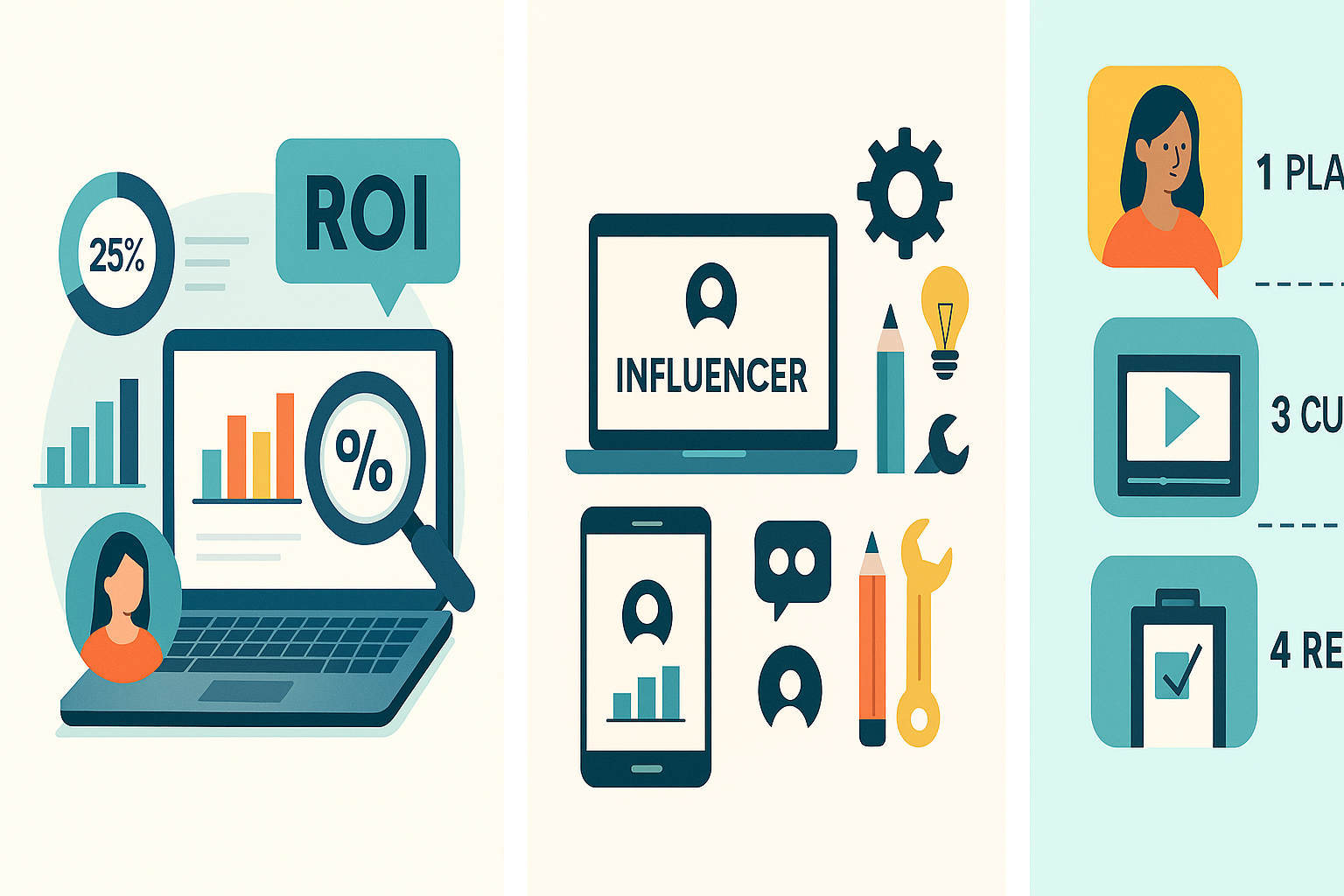ROI Measurement for Influencer Campaigns
One of the most critical challenges for marketers is accurately measuring the return on investment (ROI) from influencer marketing. Unlike traditional digital ads with clear click metrics, influencer campaigns span multiple touchpoints from brand awareness to conversions. This guide provides a comprehensive framework to calculate, interpret, and optimize ROI for your influencer initiatives.
1. Define Clear Objectives & Metrics
Start by mapping each campaign’s goals to specific metrics:
- Awareness: Impressions, reach, share of voice, sentiment analysis.
- Engagement: Likes, comments, shares, saves, video completion rate.
- Traffic: Link clicks, landing page visits, session duration.
- Conversions: Form fills, trial sign-ups, e-commerce sales, app installs.
- Revenue: Direct sales tracked via UTM parameters and affiliate codes.
2. Attribution Models
Choose an attribution model that aligns with your sales cycle:
- First-Touch Attribution: Attribute full credit to the influencer as the initial exposure source.
- Last-Touch Attribution: Credit the influencer just before conversion.
- Multi-Touch Attribution: Assign weighted credit across touchpoints (e.g., influencer post, retargeting ad, email reminder).
- Time-Decay Attribution: Give more credit to touchpoints closer to conversion.
3. Tracking & Tools
Implement tracking mechanisms:
- UTM Parameters: Append unique UTM codes to influencer links to distinguish traffic sources.
- Affiliate & Promo Codes: Issue exclusive codes to track direct sales.
- Custom Landing Pages: Create campaign-specific microsites for clearer attribution.
- Analytics Platforms: Use Google Analytics, Facebook Analytics, or integrated dashboards like Reelax Insights to centralize data.
4. Calculating ROI
Use this formula:
ROI = (Revenue Generated – Cost of Campaign) / Cost of Campaign × 100%
For example, if a campaign cost ₹200,000 and generated ₹500,000 in tracked sales:
ROI = (500,000 – 200,000) / 200,000 × 100% = 150%
5. Beyond Direct Sales
Influencer campaigns often drive soft metrics that lead to long-term value:
- Brand Lift Surveys: Measure changes in brand awareness and consideration post-campaign.
- Customer Lifetime Value (CLV): Track retention and repeat purchase rates of influencer-driven customers.
- Social Listening: Monitor sentiment and share of voice to gauge reputational impact.
6. Continuous Optimization
Leverage data to refine future campaigns:
- Focus budgets on top-performing influencers and content types.
- Test different attribution windows (7-day vs. 30-day) for longer sales cycles.
- Iterate on creative briefs based on engagement patterns and feedback.
Conclusion
Accurate ROI measurement transforms influencer marketing from an art into a science, enabling data-driven decisions and greater budget accountability. With Reelax’s integrated analytics and attribution tools, you can track, analyze, and optimize every rupee spent, ensuring each campaign drives measurable business outcomes. Start measuring smarter with Reelax today.

